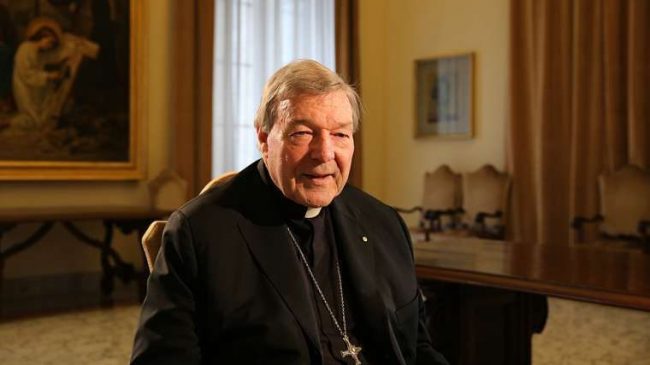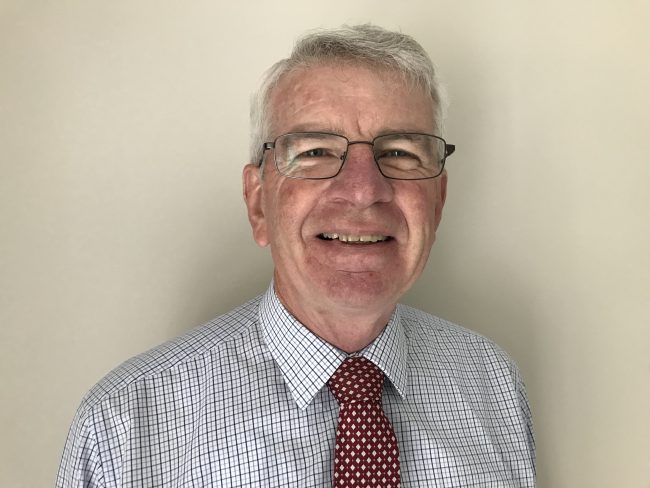Part One: Royal Commission and Cardinal Pell

Cardinal George Pell
The recent release of the unredacted reports of the Royal Commission concerning the archdiocese of Melbourne and church authorities in Ballarat enables an assessment to be made of the behaviour of Cardinal Pell who as a younger man served in the church hierarchy in both places. Does the Commission’s narrative provide a basis for levelling against him the kind of criticism that has rightly been made of other church leaders who failed to deal appropriately with child sexual abusers? I suggest it does not.
The Ballarat report is mainly concerned with the response of church authorities to abuse perpetrated at Christian Brother schools in the diocese and to abuse perpetrated by certain priests of the diocese. The report discusses Pell’s involvement with Christian Brother offenders, Fitzgerald and Dowlan. Complaints were made about Fitzgerald when Pell was an assistant priest at Ballarat East in 1973. The main complaints concerned Fitzgerald taking grade 3 boys to an annual camp where they swam naked and his practice of kissing boys as they left school for the day. Pell heard about this behaviour. However, the Royal Commission accepted his evidence that he had no jurisdiction over the Christian Brothers. It also concluded that “it was not unreasonable for Father Pell, as a diocesan priest, to believe it was not for him to raise the conduct of Brother Fitzgerald with the provincial”.
As an old boy of St Patrick’s College, Pell took a particular interest in the college. In his evidence to the Commission he said that in the early 70s he heard things about Brother Dowlan, who was a teacher at the college. He agreed with Counsel Assisting the Commission that the things included sexual misbehaviour with boys. Pell raised the matters with the chaplain of the college, who told him the Brothers were looking into Dowlan. Pell later heard that Dowlan had been moved from St Pat’s. He expressed regret that he did not do more concerning Dowlan. In relation to evidence given by witness BWF to the Commission that BWF visited St Patrick’s presbytery next to the cathedral and complained to Pell about Dowlan, the Commission accepted Pell’s evidence that the visit did not occur.
The Commission did, however, accept evidence given by witness Timothy Green that in late 1974 he told Pell in the changing room at the Ballarat swimming pool that Dowlan was touching little boys. Pell said in his evidence that he had no recollection of the conversation. A friend who Mr Green said was with him at the changing room said in his statement to the Commission that he did not recall being there with Mr Green.
In relation to the diocese of Ballarat, the Commission’s report focusses on the knowledge of Bishop Mulkearns and the diocesan college of consultors of allegations and complaints made about four priests. The two priests relevant to any commentary concerning Pell are Monsignor John Day and Gerald Ridsdale.
The church’s Canon Law provides for a group of priests appointed by the bishop to form a college of consultors to assist him in his governance of the diocese. The consultors do not have the authority to appoint, remove or transfer a priest – that authority rests with the bishop.
After returning to Australia in 1971 from his studies for the priesthood in Rome and his doctorate in church history at Oxford, Pell was appointed assistant priest at Swan Hill, some 230km from Mildura, where Day was the parish priest. Pell told the Commission that, in the six months he was at Swan Hill, he heard rumours about paedophilia activity by Day.
The Commission makes no adverse finding against Pell in relation to Day.
Ridsdale was a shocking serial sexual abuser of young boys. He destroyed countless young lives. Sadly, Bishop O’Collins, the predecessor of Bishop Mulkearns, could have stopped Ridsdale in his tracks when around 1962 he received a complaint about Ridsdale sexually abusing a young boy in Ridsdale’s first appointment as an assistant priest at Ballarat North. O’Collins failed to stand him down there and then or take any other appropriate steps to deal with his offending.

Pell lived in the same presbytery as Ridsdale for 9 or 10 months when they were both assistant priests at Ballarat East in 1973. In evidence Pell said that he heard about Ridsdale taking groups of boys away on camps and, while he thought this imprudent, he also thought a large group would guard against any wrongdoing.
Pell was a new member of the college of consultors when in July 1977 the minutes of its meeting recorded Ridsdale’s promotion from administrator of the Edenhope parish to parish priest. In his evidence Pell accepted that Monsignor Fiscalini, the Vicar-General, who was also present at the meeting, knew by this time of complaints about Ridsdale. Pell maintained, however, that there was no discussion of the issue at the meeting. The Commission concludes in its report that “it is likely” Pell also knew of Ridsdale’s sexual transgressions by then but the report gives no basis for that conclusion.
At the September 1982 consultors meeting which Pell attended the minutes recorded that Bishop Mulkearns advised it had become necessary for Ridsdale to move from Mortlake and that negotiations were under way to have him work with the Catholic Enquiry Centre in Sydney. When the Commission put the minutes to Pell, he agreed that, by the time of the meeting, three of the consultors knew of Ridsdale’s offending in Mortlake but he strenuously denied that he had any such knowledge and said that he did not recall any reason having been given by Mulkearns as to why the move was necessary.
The Commission’s report extensively examines all the evidence relating to this meeting and rejects Pell’s evidence that paedophilia was not mentioned and that the true reason for Ridsdale’s move was not given. The Commission concludes that it is “implausible” that Mulkearns did not inform those at the meeting of at least complaints of sexual abuse of children having been made about Ridsdale.
However, the three other consultors who also gave evidence to the Commission about the meeting similarly said they had no knowledge that Ridsdale was being moved because of child sexual abuse. The wording of the minutes is consistent with the notion that Mulkearns was announcing to the meeting a decision he had already made.
Nothing in the Ballarat report convicts Pell for failures of leadership, especially when one properly understands the role played by consultors. On the other hand, the conclusion reached by the Commission that the bishop was autonomous and he alone was the decision maker about his priests is clearly correct, as is its further conclusion that the hierarchical structure of church authority revealed by the report had the obvious potential for mismanagement and abuse of power.

• Denis O’Brien was chief lawyer of the Truth Justice and Healing Council during the Royal Commission. NEXT WEEK: Part Two examines the unredacted reports about the Archdiocese of Melbourne.



My reading of the Royal Commission Report led me to believe no one on the RC had a clue how the Catholic hierarchy worked under Cànon Law. A meeting of Consultors was not a clearing house for gossip & rumours.
When I read the complete unredacted Reports of the Royal Commission, I was dismayed by how often the Commissioners resorted to guessing ‘the likelihood’ of one priest’s knowledge of another’s guilt. For example, when the young Father Pell, back in the 1970s, joined [for the first time] a meeting about [inter alia] moving Ridsdale to another parish, the Commission concluded (“We are satisfied…”) that “it is likely that he knew of Ridsdale’s sexual transgressions.”
The Commission’s conclusion, however, was based on “likelihood” and not on established fact. Speculation and conjecture dominated this part of the proceedings.
The Commission should not have intimated Father Pell’s guilt based on mere “likelihood”. We all know that Royal Commissions are not held to the same standards as law courts but such deceitful transition from what the Commission speculated was “likely that he knew” to a general conclusion that he “did know” is logically and legally unacceptable.